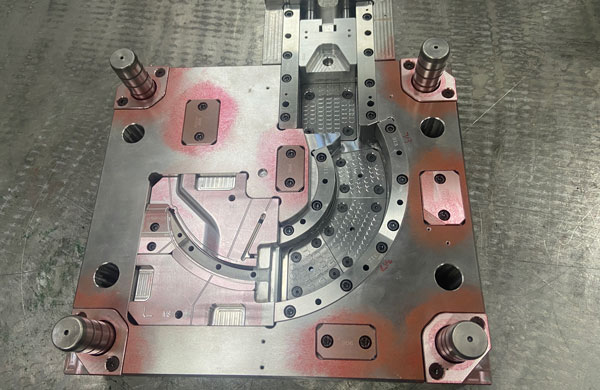During the injection molding process of plastic molds, due to the enormous injection pressure, the molds often undergo deformation and misalignment, exerting excessive pressure on the sliding parts of the plastic mold and leading to biting phenomena. This not only affects production efficiency but may also damage the mold, increasing repair costs. So, how can we effectively prevent plastic mold biting? This article will elaborate on the causes of sliding phenomena in plastic molds, methods to prevent biting, and precautions to take.
I. Analysis of the Causes of Sliding Phenomena in Plastic Molds
There are mainly three reasons why plastic molds exhibit sliding phenomena:
Insufficient Lubrication: If the sliding parts of the plastic mold are not adequately lubricated, the friction coefficient will increase, making sliding less smooth and triggering biting.
Insufficient Rigidity: If the sliding parts of the mold lack rigidity, they are prone to deformation under pressure, increasing the risk of biting.
Deformation and Misalignment: If the sliding parts of the mold are deformed or misaligned due to design or manufacturing defects, their sliding performance will be directly affected, leading to biting phenomena.
II. Effective Methods to Prevent Plastic Mold Biting
To effectively prevent plastic mold biting, we can take the following measures:
Enhance Mold Rigidity: Ensure that all screws in the mold are tightly secured to improve the overall rigidity of the mold and resist deformation caused by injection pressure.
Hardening Treatment: Subject the sliding parts of the mold to hardening treatment to increase their hardness and enhance their resistance to biting.
Select Appropriate Materials: The sliding parts can be made from different steel and copper materials, utilizing the frictional characteristics between different materials to effectively prevent biting.
Use Lubricants: Apply appropriate amounts of lubricants such as molybdenum disulfide and copper powder to the sliding parts to reduce the friction coefficient and improve sliding smoothness.

III. Precautions to Take When Preventing Biting
When preventing plastic mold biting, we also need to pay attention to the following points:
Lubricant Selection: If the lubricant contains oil, it should be used with caution because oil on the injection-molded products can easily cause net-like cracking, affecting product quality.
Promptly Address Minor Biting: If minor biting is detected in the plastic mold, it should be immediately polished and an appropriate amount of lubricant added to restore its sliding performance.
In summary, preventing plastic mold biting requires a multi-faceted approach, including enhancing mold rigidity, applying hardening treatment, selecting appropriate materials, and using lubricants. At the same time, attention should be paid to lubricant selection and promptly addressing minor biting during operation. Only in this way can we effectively ensure the normal operation of plastic molds, improve production efficiency, and reduce repair costs.